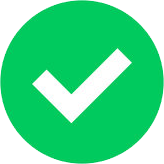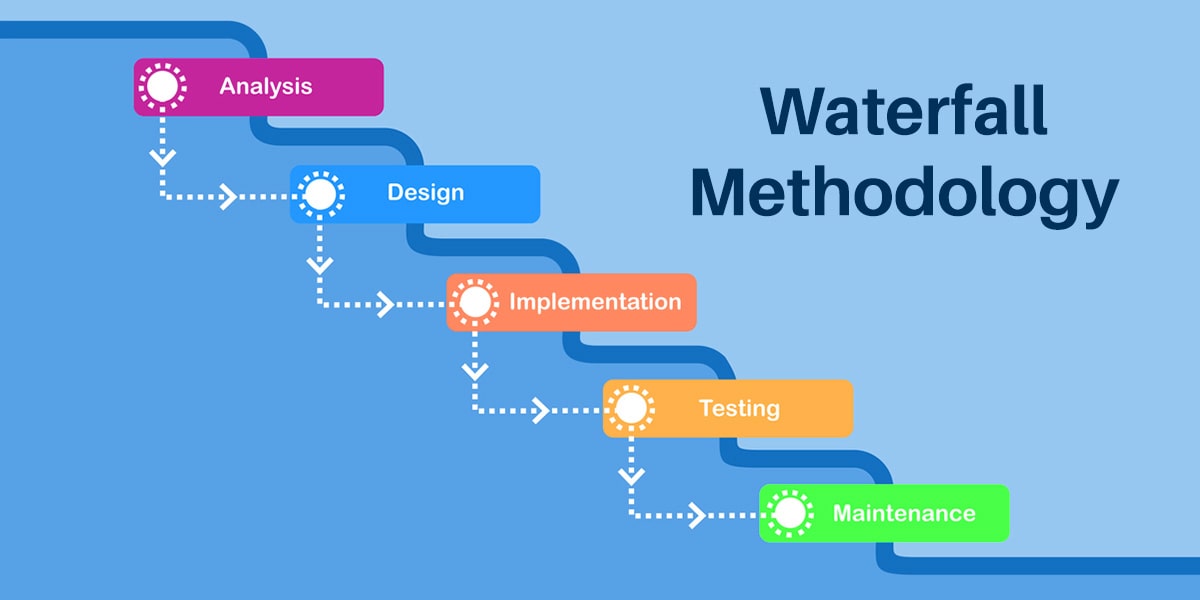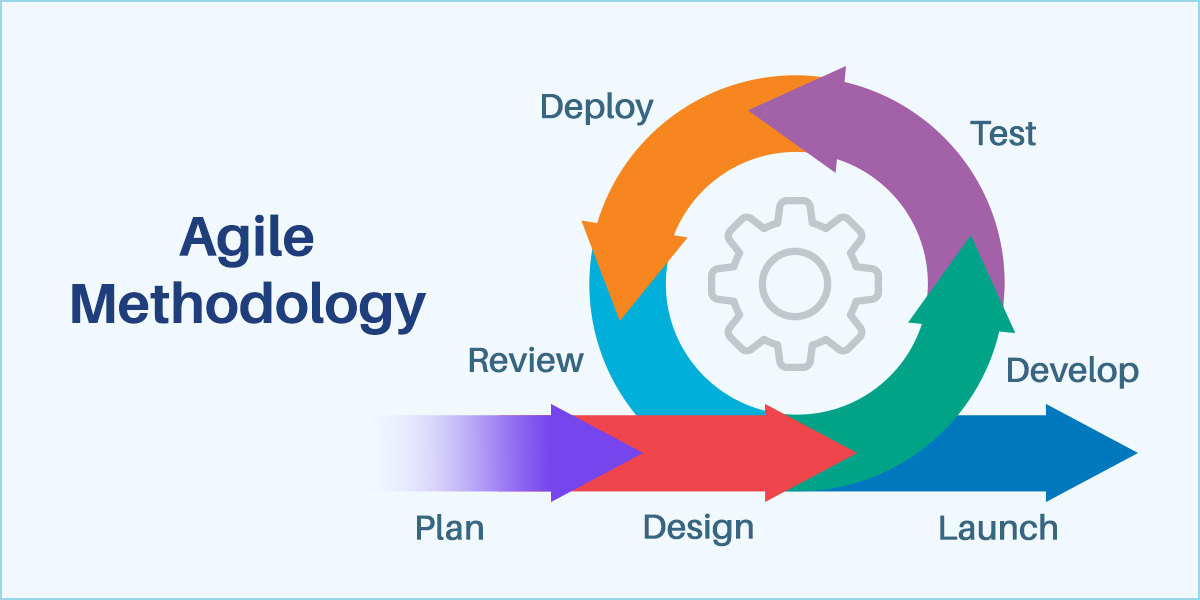Struggling to get your projects finished on time and within budget? It’s a common headache in the project world, When selecting a project management methodology, the decision between Agile vs Waterfall is critical and can make or break your project’s success.
Ever felt stuck because you couldn’t make changes to a project, or found out too late that what you’ve built isn’t what’s needed? That’s where the choice between Agile and Waterfall comes in.
We’re diving into both methods to help you pick the right one, ensuring your projects hit the mark every time. Say hello to smoother projects and happier teams with our guide. All said and done, we will reveal which methodology we are using for our clients at Zaigo Infotech.
Agile vs Waterfall Methodology: Overview
When comparing software development methodologies, Waterfall stands out for its structured, linear approach, perfect for projects with clear, unchanging requirements. In contrast, Agile offers flexibility and adaptability, making it ideal for projects where needs evolve. Choosing between them can significantly impact the success of your software development efforts. Here’s a concise overview to familiarize you with the core concepts of Agile and Waterfall methodologies
What is the Waterfall methodology?
In the Agile vs Waterfall comparison, waterfall methodology is a structured software development process where tasks are completed in a linear sequence from conception to deployment. This method divides the project into distinct phases: requirements gathering, design, implementation, testing, deployment, and maintenance.
Each stage must be fully completed and approved before proceeding to the next, creating a “waterfall” progression. The approach emphasizes thorough documentation and planning, minimizing changes during the development process.
However, its rigidity limits flexibility and makes it challenging to incorporate changes once the process is underway, contrasting with more iterative methodologies like Agile.
What is the Agile methodology?
The Agile methodology is a project management and software development approach that prioritizes flexibility, customer satisfaction, continuous improvement, and high-quality results. It involves breaking down projects into small, manageable pieces, called iterations or sprints, which are completed in short cycles.
Agile encourages teamwork, collaboration, and adaptability throughout the development process. Teams regularly reassess their work and adjust plans based on feedback and changing requirements. This iterative approach allows for rapid delivery of parts of the project, enabling teams to quickly adapt to changes and deliver products that better meet the needs of their customers.
Agile vs Waterfall Methodology: Pros and Cons
Waterfall methodology follows a linear and sequential approach to software development. Its benefits include clear project milestones, structured planning, and easier documentation. However, drawbacks may arise from its inflexibility to accommodate changes late in the development process.
On the other hand, Agile methodology is iterative and flexible, allowing for continuous improvement and adaptation to changing requirements. The benefits of agile include increased collaboration, faster delivery of usable software, and better responsiveness to customer feedback. Nonetheless, Agile may face challenges with initial planning and documentation due to its dynamic nature.
Pros and Cons of the Waterfall Model
Pros:
- Predictability and clear structure make it easy to understand and manage.
- Well-defined stages simplify budget and timeline estimation.
- Comprehensive documentation ensures clarity and accountability.
Cons:
- Inflexibility to change once the project is underway.
- Late testing phase may lead to the discovery of major issues too late in the process.
- Risk of not meeting the end user’s needs due to the lack of iterative feedback.
Pros and Cons of Agile Model
Pros:
- High adaptability to changing project requirements.
- Continuous feedback loop with stakeholders ensures the product meets user needs.
- Faster delivery of functional components.
Cons:
- Less predictability in budget and timeline.
- Requires high customer involvement, which may be challenging to manage.
- Can lead to scope creep if not properly managed.
The Ultimate Difference Between Agile and Waterfall
The core distinction in the Agile vs Waterfall debate lies in their approach to managing and executing projects, particularly in software development or any complex project management environment. Here’s a succinct breakdown:
Approach to Project Management:
Agile is characterized by its iterative, flexible, and adaptive nature. It breaks down the project into manageable units, allowing for frequent reassessment and adaptation to change, making it ideal for projects where requirements are expected to evolve or are not fully defined from the start.
Waterfall follows a linear and sequential approach, where each phase of the project must be completed before the next one begins. It relies heavily on upfront planning and clear, fixed requirements, making it suitable for projects with well-understood objectives and minimal changes.
Response to Change:
Agile embraces change, even late in development. It encourages continuous feedback from end-users and stakeholders, allowing the project to adapt and evolve in response to changing needs and new insights.
Waterfall treats change as an exception and often sees it as a risk. Modifications to the scope or requirements after the project has begun are difficult and costly, as they typically require revisiting and redoing work.
Customer Involvement:
Agile involves customers and stakeholders throughout the project, seeking their input and adjustments based on their feedback throughout the development process.
Waterfall typically involves stakeholders at the beginning (requirements phase) and end (testing and delivery) of the project, with limited interaction in between.
End Product Delivery:
Agile aims to deliver working increments of the product regularly, providing tangible progress and allowing for adjustments as the project evolves.
Waterfall aims to deliver a complete product at the end of the project, adhering to the initial plan and specifications.
Approach to Project Management:
Agile offers high visibility into the project’s progress and challenges throughout its lifecycle, allowing teams to adapt and pivot as needed.
Waterfall provides a clear initial project plan, but visibility into progress and challenges is more limited until later stages, making adaptation more challenging.
Agile vs Waterfall Comparison Table
| Factor | Agile | Waterfall |
|---|---|---|
| Approach | Iterative and flexible with quick adaptability | Sequential and structured with phase completion |
| Change Management | Welcomes changes at any stage | Resists changes post-initiation |
| Customer Involvement | High throughout the project | Limited to start and end phases |
| Focus | Early delivery and customer satisfaction | Adherence to plan and final deliverable |
| Project Planning | Dynamic, evolves with project | Extensive, defined before start |
| Risk Management | Continuous through iterations | Upfront during planning phase |
| Delivery | Incremental with regular feature releases | Singular complete product at end |
| Documentation | Just enough, focused on current needs | Comprehensive, detailed upfront |
| Team Structure | Cross-functional and collaborative with fluid roles | Defined roles and responsibilities by phase |
| Feedback Loop | Short and continuous for rapid adjustments | Longer, often post-completion |
| Ideal Use Case | Evolving requirements or high uncertainty | Clear, stable requirements with predictable needs |
Our Approach to Client Methodologies
When it comes to us at Zaigo Infotech, a software development company with over 9+ years in the industry, we’ve learned how to deliver the best results for our clients. Known across India for crafting top-notch software products, we’ve successfully completed over 800 projects in more than 15 different sectors. Our secret? We love using the Agile method, which means we work closely with our clients, change plans easily when needed, and make sure everything is clear to everyone involved.
At Zaigo Infotech, Agile methodology streamlines our software development, enhancing teamwork, efficiency, and client communication. By dividing projects into manageable parts and using sprints for iterative development, we quickly adapt to changes, ensuring the final product aligns with client needs. This approach not only improves our workflow but also guarantees client satisfaction by incorporating their feedback throughout the development process.
For a closer look at how our agile approach has led to success, check out our software development case studies. It showcases our commitment to delivering quality software solutions that meet and exceed our clients’ expectations, highlighting our journey and the results of our collaborative, flexible approach.
So, choosing between Agile vs Waterfall really depends on your project. If your needs might change or you’re not sure what you want yet, Agile could be better. If you know exactly what you need and it won’t change, Waterfall might work well.
Frequently Asked Questions
Waterfall is a linear and sequential approach to software development where each phase must be completed before the next one begins. It is best for projects where requirements are well-understood and unlikely to change.
Agile is an iterative and incremental approach that emphasizes flexibility, customer satisfaction through early and continuous delivery, and the ability to adapt to changing requirements. Work is divided into small sections called iterations or sprints.
The cost difference between Agile and Waterfall can vary widely depending on the project. Agile can be more expensive in the short term due to its iterative nature, which might require more frequent testing and meetings. However, Agile can ultimately be more cost-effective because it aims to produce more value by adapting to user feedback and changing requirements, potentially reducing costly late-stage changes.
The Agile process is a project management methodology that includes:
- Breaking down the project into manageable units (user stories)
- Prioritizing these units by value and complexity
- Iterative development in time-boxed sprints (typically 2-4 weeks)
- Regular reassessment and adaptation of plans
- Close collaboration between cross-functional teams
- Continuous integration and delivery
- Regular feedback from and collaboration with customers or users
The Software Development Life Cycle (SDLC) is a term that describes the process used for developing software, which includes phases like requirement analysis, design, implementation, testing, deployment, and maintenance. There are various methodologies to approach SDLC, and Waterfall and Agile are two of them. Therefore, Agile is a subset of SDLC approaches, characterized by its iterative, collaborative, and flexible process.








